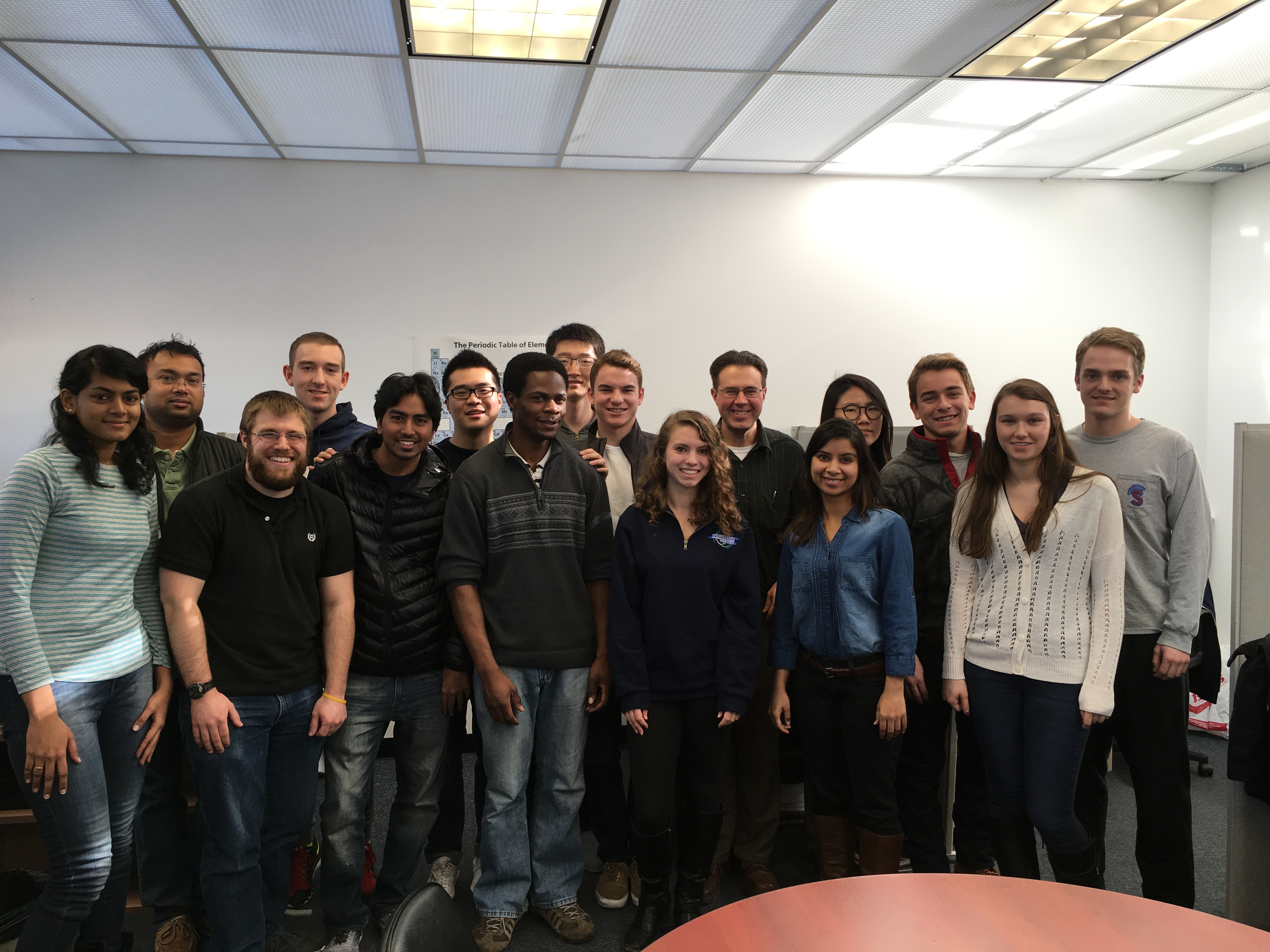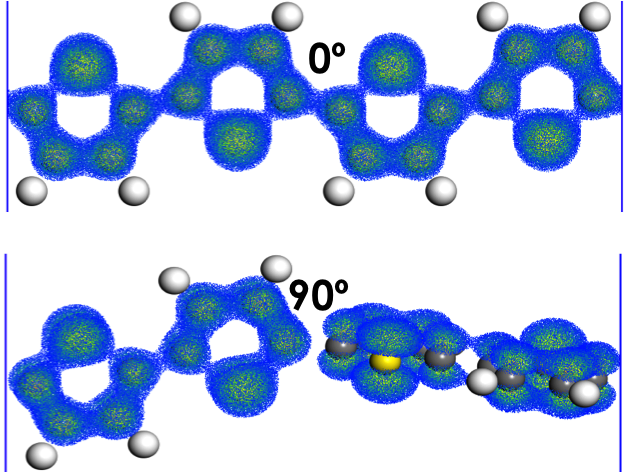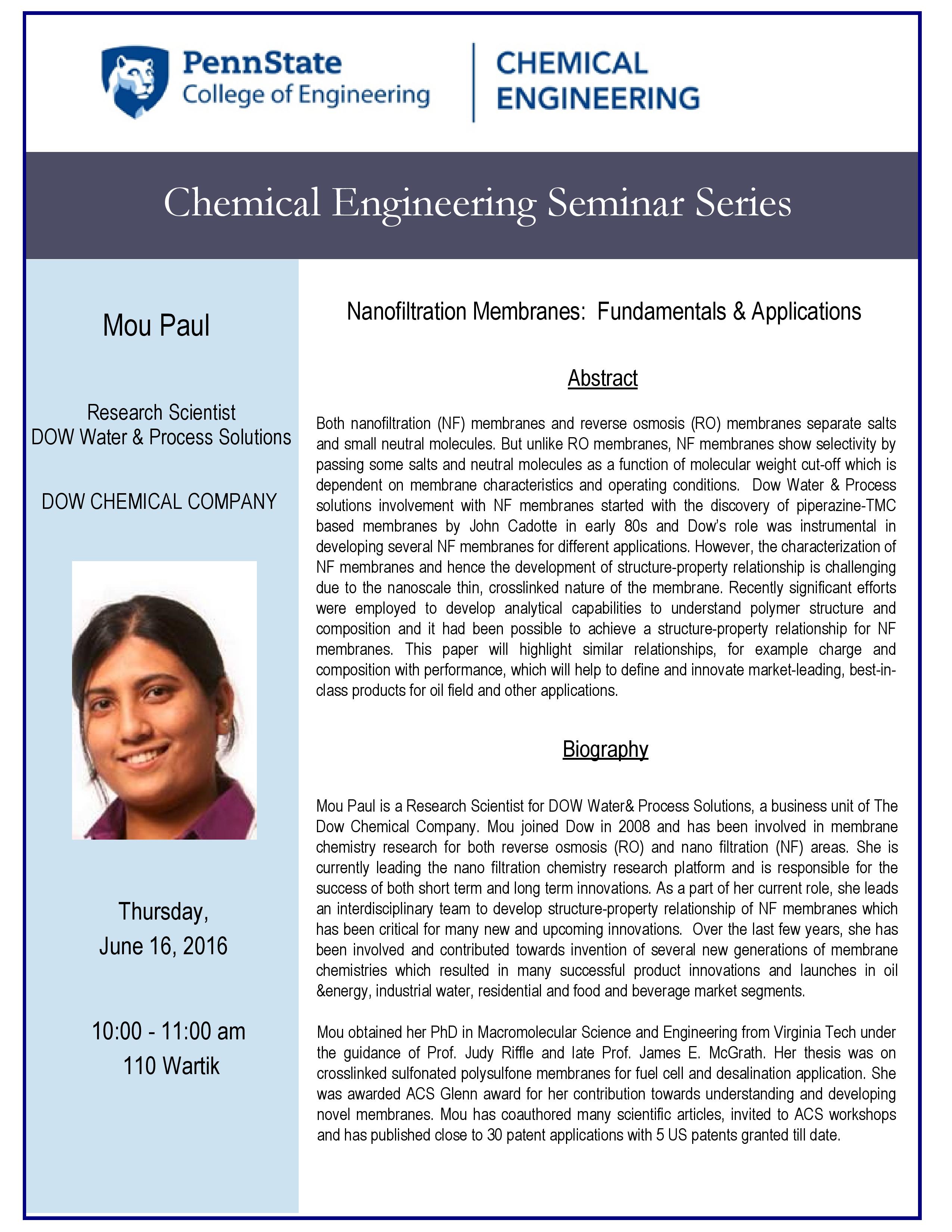The ChE GSA started a new project in July, in which we will feature one of the research groups in our department monthly. Dr. Savage’s group courteously agreed to be our first group. Their profile can be found on our website. This month, our featured group is Dr. Michael Janik’s group.

Jiyun Park (Grad Alumni), Robert Nidzyn (UG), James Maximuck (UG)
Megan Ingalls (UG)
We have asked the graduate students within Dr. Janik’s group questions related to their research and here are their responses.
Of course starting off with our ChE-style ice-breaker, what is your favorite equation of all time?
Ian McCrum: I would have to say HΨ=EΨ, the time-independent Schrödinger equation. It appears short and simple but provides a complete description of a time-independent quantum system.
Joel Bombile: Schrodinger equation is like Newton’s Law in classical mechanics. It predicts the future behavior of quantum mechanical systems by describing the time evolution of the associated wavefunctions. A system’s wavefunction gives a complete description its quantum state.
Gaurav Kumar: My favorite equation has to be HΨ=EΨ. It is so simple, yet complex and powerful. I make my supercomputers solve this equation every day.
Hauran He: My favorite equation would be E=mc2 because this equation serves to convert units of mass to units of energy and implies the possibility of converting energy into mass.
Monica Roy: My favorite equation is the Bernoulli equation because it is a simple equation based on a fundamental scientific property of conservation of energy and it has lots of applications.
Let’s now talk about your research. From my understanding, Dr. Janik is very interested in advanced energy conversion technologies and catalysis. What is your project and what is the major problem that your project is trying to solve?
Gaurav Kumar: The overarching theme of my research is the rational design of high-performance catalysts. A major problem in catalysis is the search for highly active and selective catalysts that maximize the yield of the desired product. My goal is to understand intrinsic and extrinsic factors affecting catalysis and use them to guide the design of high-yield stable catalysts, especially for C1 chemistry and biomass conversion.
Monica Roy: My research is focused on trying to understand how methane reforming proceeds on lanthana-doped in ceria. We are interested in understanding dopant distribution, sulfur tolerance and coking resistance of the material so that we can make a good catalyst for methane reforming.
Joel Bombile: I use a mixed quantum and classical approach to model the electronic degrees of freedom of conjugated polymers, taking into account atomic coordinates changes. Motivated by their electronic and mechanical properties combined with low cost and ease of processing, conjugated polymers have found promising application as active elements in organic semiconductor devices. However, the low charge mobility, attributed to disorder in these materials compared to inorganic semiconductors have limited their widespread usage. Transport in conjugated polymers is poorly understood and this hampers the design and sustained development of new high-performance polymer semiconductors. An accurate description of electronic transport in these materials requires an effective account of the interaction between electronic and nuclear degrees of freedom. Coarse-graining is employed to allow access to larger length and time scales.

Hauran He: My research project is about designing a novel catalyst which can hydrogenate benzene or ethylene with high selectivity when they are co-fed into the same reactor. The major problem of this project would be finding a descriptor that can indicate the selectivity of hydrogenation reaction and test a large number of catalysts.
Ian McCrum: I use quantum mechanics to model electrochemical and electrocatalytic reactions that occur in batteries and fuel cells. My main focus is on understanding why electrolyte composition and pH have such a large effect on the rate of the hydrogen oxidation reaction, important for hydrogen fuel cells. If we can more fully understand the mechanism for this reaction, then we can design better, more active catalysts to produce lower cost and higher performing fuel cells.
Have you published your findings?
Gaurav Kumar: I have published two first author papers this year, and another paper is under review. My papers can be found here.
Ian McCrum: My most recent publication involved modeling hydrogen and hydroxide adsorption on stepped platinum electrode surfaces and examining the effect of alkali cations and pH (First principles simulations of cyclic voltammograms on stepped Pt(553) and Pt(533) electrode surfaces).
Joel Bombile: Please find my published work here. The tight binding model I proposed has the ability to replicate the broadening of the absorption spectrum of a dilute polymer by capturing the impact of dihedral fluctuations on the band structure of polythiophene.
Have you presented or will be presenting your work at any conferences in the near future?
Gaurav Kumar: I have presented posters at the North American Catalysis Society biennial meeting in Pittsburgh 2015, the AIChE annual meeting 2015, and the Gordon Research Conference (GRC) in Catalysis 2016. I also gave a talk at the AIChE meeting 2015, and would be presenting my work in AIChE meeting this year in San Fransisco.
Ian McCrum: Presentations I have given at conferences include the following:
– “Alkali cation effects on the hydrogen oxidation reaction in alkaline solutions” PCCS 2014 – Pittsburgh, PA.; AIChE 2014 – Atlanta, GA.
– “Effect of organic and alkali metal cations on the hydrogen oxidation reaction” ECS 2015 – Chicago, IL.
– “Effect of alkali metal cations on the hydrogen oxidation reaction” NACS NAM 2015 – Pittsburgh, PA.
– “Effects of pH and alkali cations on cyclic voltammograms and the HOR/HER” ECS 2016 – San Diego, CA.
– “Understanding how pH and alkali cations affect cyclic voltammograms and the hydrogen oxidation reaction on transition metal surfaces”
ACS 2016 – Philadelphia, PA; AIChE 2016 – San Francisco, CA
Joel Bombile: Our work has been presented at the Fall 2015 MRS meeting in Boston, MA, and at the 2016 Polymer Physics GRC in South Hadley, MA.
Thank you, members of Dr. Janik’s group, for taking the time to talk about their group.



You must be logged in to post a comment.